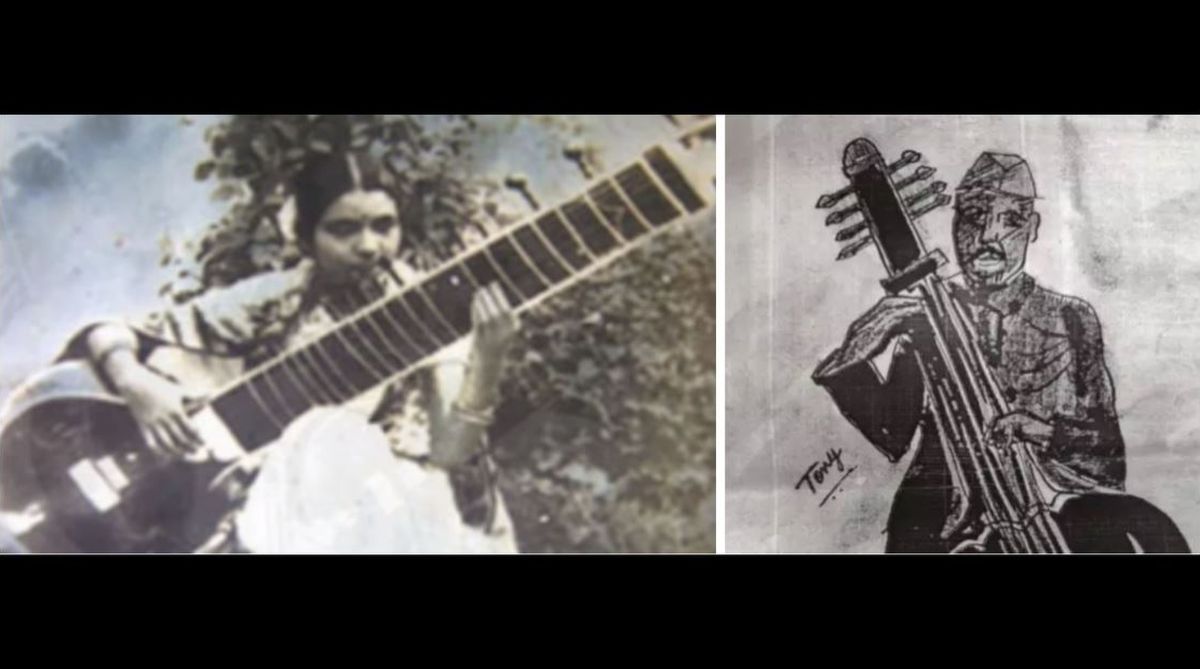It is not surprising that along with some other places North India too did its bit to play homage to the unfortunate musical genius Annapurna Devi, who died some time ago. She had been living in erstwhile Bangalore for years and her demise revived memories of her illustrious father, Ustad Allauddin Khan, in whose footsteps she had followed, though she had become a recluse, singing seldom but still making delicious fish curry for those close to her. She and her father’s influence was felt in Delhi too, where her husband, Pandit Ravi Shankar’s musical performances bore testimony to his Ustad’s genius.
Ustad Allauddin Khan became Indian classical music’s greatest legend in the 20th century ~ the mosiqui maestro, who left behind such marvels as Ali Akbar, Ravi Shankar, his daughter Annapurna Devi Shankar and Pannalal Ghosh to name a few.
Advertisement
Annapurna’s marriage to Ravi Shankar ended disastrously and left her a tragic figure, cut off from the mainstream of the world of music, which is a heart-breaking story in itself. She had come to Jaipur during her honeymoon and had been fascinated by the city of hills, lakes and Rajput palaces, though she spent only a night at the now demolished Kaiser-eHind hotel, near Jaipur station, where Mark Twain also stayed in the late 19th century.
One of Baba Allauddin Khan’s pupils, Jotin Bhattacharya, aptly observed: “Our great names in music have mostly been vocalists. Swami Hari Das, Baiju, Tansen, Gopal Nayak were all vocalists. Only in Ustad Allauddin Khan we find the same height and the same depth as well as the same versatile achievements and yet he was essentially an instrumentalist and a host of other stalwarts sprang from this fountainhead.”
Jotin Bhattacharya is one of those stalwarts, who has probed the life and times of Baba with praiseworthy doggedness. His work gives intimate glimpses of the man who, born in 1881 in a small village in Tripura State, where his Hindu forebears had dwelt for 500 years, had by the time of his death in 1972 become a household word all over the country. And perhaps more than anything else, why did a Brahmin like Jotin sit at his feet to learn the finer nuances of music?
Alam, as he was known in childhood, was a strange child, who gave a manifestation of the things in store for him by acts and deeds, which surprised his elders. His father, Sadhu Khan, was himself a musician of note, having been coached by the great Kashim Ali Khan of the Tansen Gharana, whose wizardry of the Sitar is still a byword for excellence in Eastern India. His mother, Harasundari Khatoon divulged to her husband the secret that when Alam was yet an infant he played the tabla on her breasts, being inspired by the rhythmical sound of the Sitar played by his father.
When Alam was five-years-old he became the whipping-boy of his brother Aftabuddin (a noted musician in his own right), who forced him to fill his hookah every day and thus tempted the boy to pick up the habit of hookah smoking in his childhood. Aftab dodged school and the young Alam followed suit. But he had a different reason for doing so. There was a Shiva temple in his native Shivapur village where the music inspired the young Alam to attend the service and accept prasad.
As his time for going to school synchronised with puja, bhajan and aarti at the temple, he decided to cut classes and instead devote his time to imbibing the devotional music played in the temple by many visiting saints from all over the country. After six months of absence from school the headmaster lodged a complaint with his father and young Alam’s activities came into the limelight. The next morning, unknown to him, his father followed Alam and found him engrossed in temple music.
Perplexed, his father came back home but did not take much notice of the boy’s misdeed. His mother, however, took a strict view and he was kept in solitary confinement for several days without food. Later his elder sister Madhumalti Khatoon, who lived nearby, took him home with her as, being the youngest in the family, he was a favourite of hers. Here Alam not only missed school but also had days of peace and harmony. But these ended when his mother fell ill and he had to go back home.
However, Alam had tasted the joy of freedom and one day while his mother lay sleeping on her sick bed, he opened the almirah and took away a portion of the family treasure. In the dead of night he left home at the age of 10 and travelled to Manik Nagar on foot, from where he boarded the Narayanganj-bound steamer.
Next morning he caught a train from Narayanganj to Sealdah. Here the rush puzzled him and he drifted the whole day amid strange sights and sounds, a village boy lost in a metropolitan town. It became dark and the lights dazzled him, his body ached from the blows rained on him earlier in the day by street urchins and his stomach longed for food as he stood on the banks of the Ganga longing for the comforts of his house and the love of his mother and sister.
A constable came along and instead of helping the poor lost boy, cursed and swore at him. So poor Alam drifted along the banks until he came to a group of sadhus sitting near the Calcutta cremation ground, preparing bhang. They heard the child’s tale of woe. The hermits made him take a holy dip in the Ganga, then offered him a pinch of ash to swallow with Ganga water.
He was then directed to Nimtalla street, where Alam saw a host of destitutes being fed. He got his share too and excited the pity of the man in-charge, who took him to the dispensary of a well-known local physician, Kedar Doctor, and prevailed upon the Doctor to allow the boy to stay there until such time as some other arrangement could be made for him.
At the dispensary one day came a young man, who was impressed by the little boy and took him home to his mother. The good woman heard his story and, a musician herself, decided to keep him at her house. “But I’m a Mohammedan!” exclaimed Alam. “It does not matter,” said the Hindu foster mother. “All children are divine.” She then pleaded his cause with her husband, Bireswar Babu, who was just as impressed with the boy as his wife.
Bireswar Babu took Alam to his guru Gopal Chandra Bhattacharya, alias Nulo Gopal, the famous state musician of Maharaja Jotindra Mohan Tagore of Pathuriaghats, and young Alam was on his way to success. Among those who heard him sing as a guest of Jotindra Tagore was Maharaja Madho Singh II of Jaipur, himself a lover of music and a great patron of classical artistes.
Baba had many other teachers besides Nulo Gopal after that and, of course, made his indelible mark in Indian music. Besides this, Baba’s contribution to music included many ragas and inventions. His mode of training, talas and gats, the history of the sarod, the life of Tansen and the similaries between that great musician and Baba and of how both left their musical heritage to their daughters is amazing.
That legacy ended with the death of Annapurna Devi, who was cremated in keeping with her father’s inter-faith beliefs. Would it surprise you to know that while staying most of his later life in Madhya Pradesh’s Malihar, Allauddin Khan also visited Jaipur and reluctantly declined Maharaja Man Singh II’s invitation to settle down in Rajputana’s most progressive pre-Partition State as his heart and soul had become deeply linked to Madhya Pradesh (then Central Province)?
















